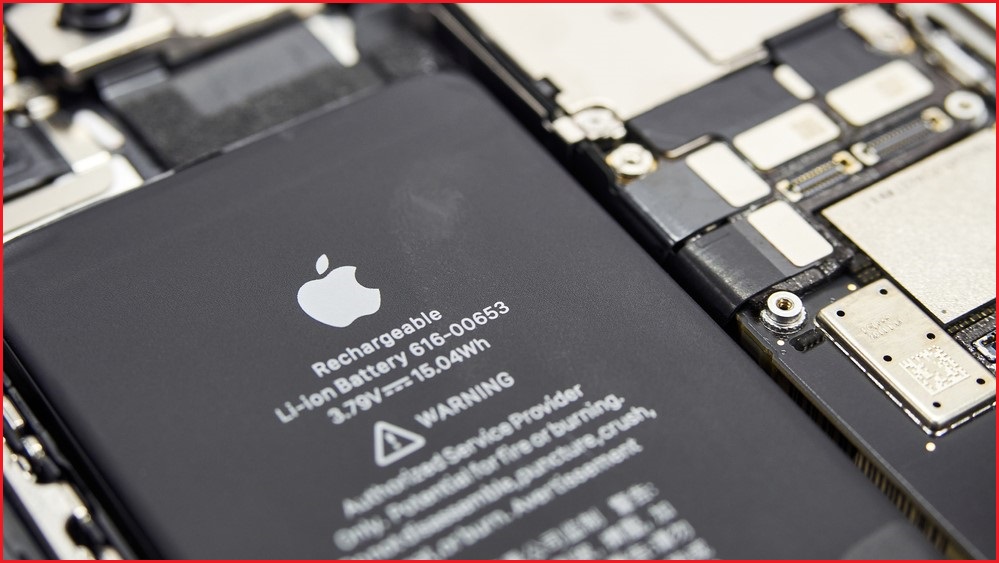Aiming to stem the environmental impact of skyrocketing battery usage, new EU regulations will force mobile device makers to build devices with batteries that can be easily replaced when necessary – but Apple might avoid an iPhone redesign if recent changes comply.
The new rules – which update battery stewardship standards first introduced in 2006 – are designed to address the growing use of rechargeable lithium-ion and other batteries in consumer devices, home appliances, electric vehicles (EVs), and other mobile equipment.
Aiming to manage the environmental impact of those batteries, the new regulations include a host of measures spanning the entire battery lifecycle – including carbon footprint declarations, labels and ‘digital battery passports’ on EV, e-scooter and e-bike batteries.
It is an attempt to manage the environmental impact of a fast-growing global market driven by 65 per cent growth in total demand for automotive lithium-ion batteries used in EVs.
“Devices are often replaced prematurely by users and are, at the end of their useful life, not sufficiently reused or recycled, leading to a waste of resources,” the guidelines note while warning of the environmental impact of the devices.
Australians recycled 109 tonnes of mobile phones and accessories during 2021-22, according to industry-backed recycling scheme MobileMuster, with more than 8 million Australians handing in their devices during the year.
The global market for all types of rechargeable batteries, McKinsey recently forecasted, will grow by more than 30 per cent annually to reach 4.7 terawatt-hours (TWh) by 2030.
Mobility batteries will comprise 91 per cent of that – and building a circular value chain, including a robust recycling ecosystem, could generate $8.6 billion ($US6 billion) in additional profit by 2040.
Due to take effect in 2027, the new EU rules intensify targets around recovery of portable device batteries, 45 per cent of which are expected to be collected for recycling this year and 73 per cent by 2030.
Recyclers will be expected to recover 80 per cent of lithium from waste batteries by 2031 – up from 50 per cent in 2027 – and 95 per cent of cobalt, copper, lead, and nickel, up from 90 per cent in 2027.
Similar to programs already rewarding the recycling of aluminium drink cans, by 2027 the EU will also consider charging a deposit on the purchase of new batteries, which would be refunded when the batteries are recycled.
“For the first time, we have circular economy legislation that covers the entire lifecycle of the product,” said EU rapporteur (S&D, IT) Achille Variati, who argued that under the new rules “batteries will be well-functioning, safer and easier to remove…. These measures could become a benchmark for the entire global battery market.”
Taking a bite out of Apple?
First floated in 2020 and formally adopted this June, the new framework also includes a requirement that portable device manufacturers design their products “in such a way that consumers can themselves easily remove and replace them”.
While many mobile phone brands have long allowed easy swapping of batteries, users of Apple iPhones and iPads have not been able to change their device batteries without paying Apple to do it – even though Apple reports they need replacement every 16 to 18 months under normal usage.
The scope of battery issues came to the fore in 2019, when Apple ran a discounted battery replacement program that attracted 10 times as many customers as expected.
Apple ultimately walked back its insistence on controlling battery replacements, announcing a DIY program for battery and other replacements in 2021, then launching its Self Service Repair Store to US customers a year ago and European customers late last year.
Some pundits have argued that the new rules will force Apple to give its devices replaceable batteries – but now that European customers have a way to change their own iPhone batteries, Apple may argue that it complies with the new regulations.
Yet other new guidelines, called the Ecodesign for Smartphones and Tablets and released in final form this month, warn of a “steep increase in… demand for energy and materials” and set as a core goal that “consumers can easily repair, upgrade and maintain them”.
Whether Apple’s program is deemed to be “easy” is yet to be seen, and Apple’s program – which currently only allows the replacement of MacBook and iPhone 12 and 13 batteries with Apple replacements – does not yet cover its other mobile devices, such as iPads.
With tablets explicitly included in the scope of the new guidelines, Apple’s hand could ultimately be forced by the new regulations – which dictate that “portable batteries in appliances must be designed so that consumers can easily remove and replace them themselves.”
“This approach is good for both the environment and the economy,” said Variati, adding that the new measures “greatly benefit consumers... Our overall aim is to build a stronger EU recycling industry, particularly for lithium, and a competitive industrial sector as a whole, which is crucial in the coming decades for our continent’s energy transition and strategic autonomy.”
US-based standards body the Consumer Technology Association (CTA) has previously asked the EU to "tread with caution to avoid doing more harm than good," warning that “the immense public utility of mobile phones and tablets, and the promise of even better features in the future, would be imperilled by regulations that seize control of product design in ways that unduly constrain manufacturer flexibility and to engage in competitive product differentiation.”
John Goodenough, creator of the lithium-ion battery, passed away over the weekend at the age of 100. He was awarded the 2019 Nobel Prize in chemistry.










